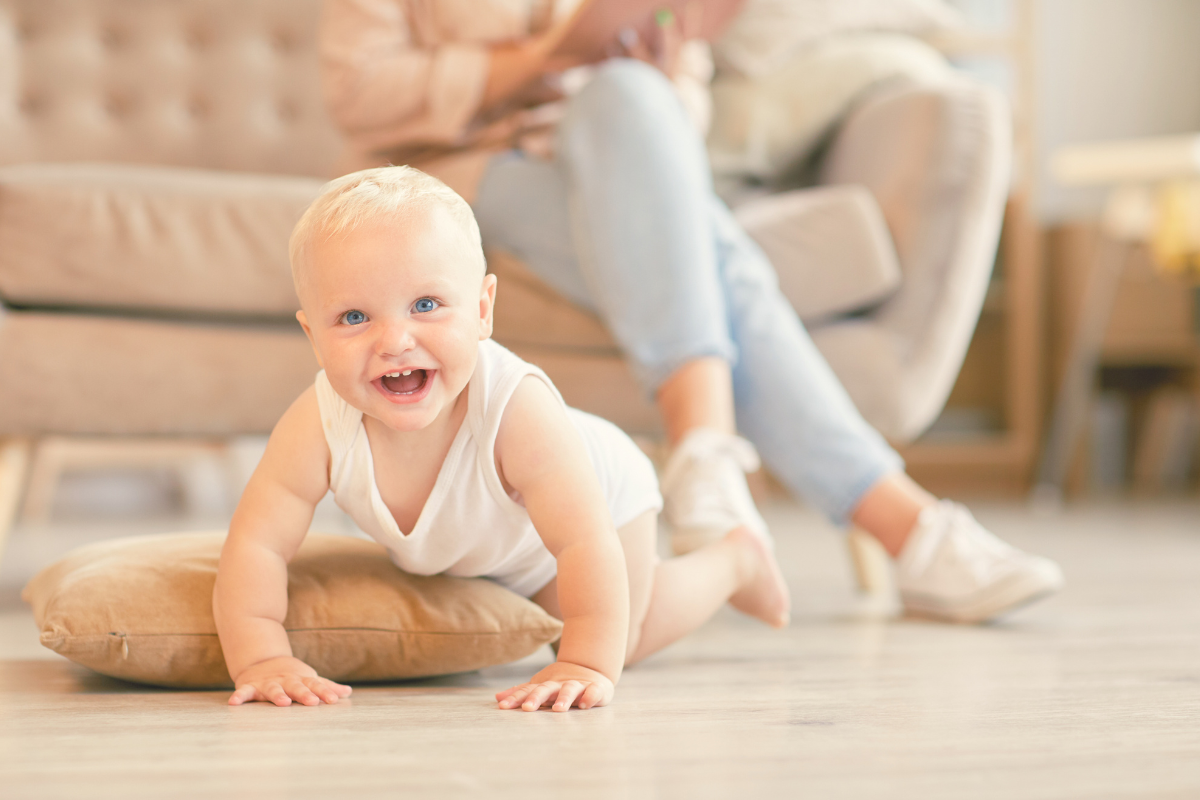When Can Infants Crawl? Introducing the Milestones of Baby Development
Watching your baby grow and hit new milestones is one of the most exciting parts of parenting. One day, they're tiny, immobile bundles of joy, and the next, they're off exploring the world on all fours.
But when exactly can infants crawl? Understanding this developmental milestone can be a mix of anticipation and sheer curiosity. Spoiler alert: it usually involves a lot of drool and baby-proofing the entire house.
In this article, we'll dive into the crawling stage, share some fun insights, and help you prepare for this adorable yet chaotic chapter of your baby's growth journey.
When Do Babies Start Crawling?
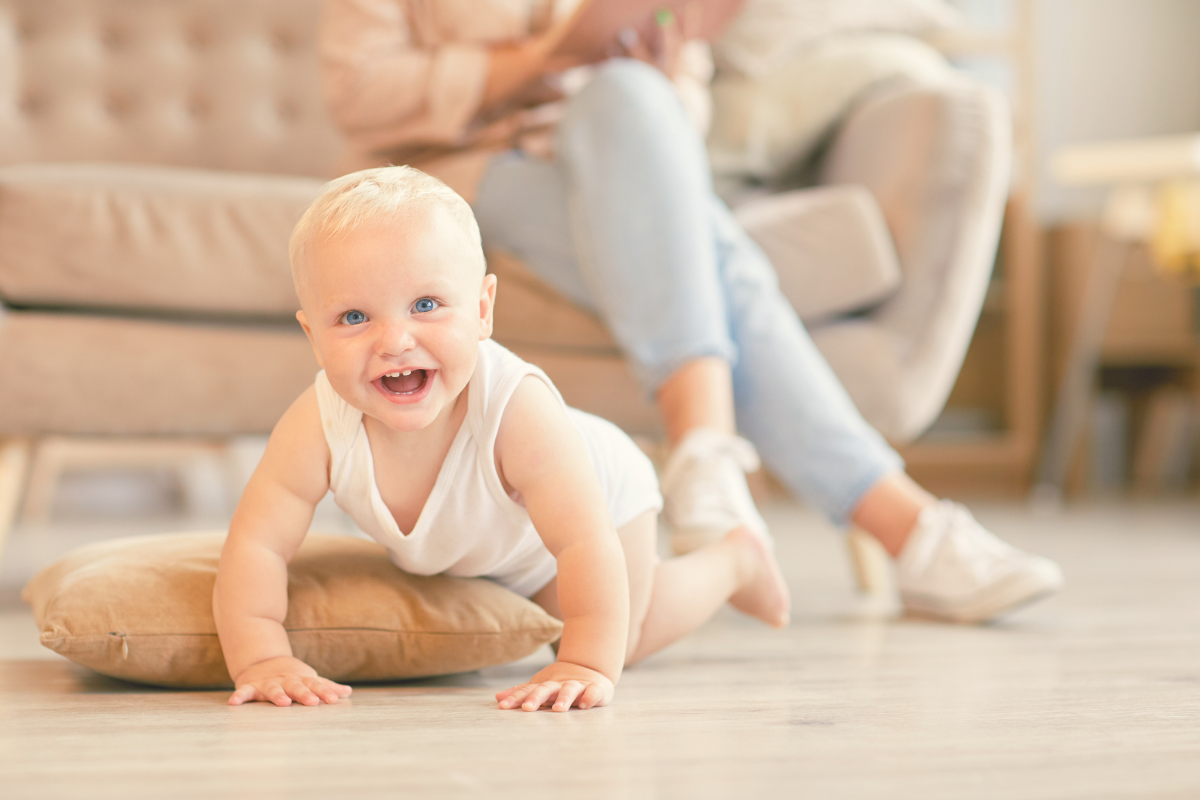
We tend to associate crawling with babies, which is why many were surprised when in 2023, the Center for Disease Control removed crawling from the official list of child development milestones in babies.
Interestingly, although studies show that crawling has plenty of benefits to children, it's also true that crawling isn't a preset milestone that every baby will achieve in the same way.
Of course, we already know that not all babies are the same. Many babies typically begin crawling between seven to ten months, but this timeline can vary significantly. Some may learn to crawl pretty early at only five months of age. About 4% of babies bypass the crawling stage altogether and proceed directly to walking.
Some babies may also prefer alternative methods to move around:
-
Bottom-shuffling. Scooting on their bottoms to get around.
-
Step-scooting. A tripod-like shuffle, basically like the crab crawl.
-
Cruising. Walking while holding onto furniture or other supports.
-
Rolling. Moving from place to place by rolling over.
It's common for babies to use a combination of these methods or create their unique styles of movement. The variety in how babies choose to move is due to their personal comfort and what feels most efficient to them. For instance, some infants might avoid crawling if it feels uncomfortable or prefer to stay upright as they explore.
Factors That Affect When Babies Crawl
There are many factors that affect when a baby learns to crawl.
-
Home environment. Your baby's surroundings plays a vital role in their developmental milestones, including crawling time. For example, babies who have the accommodations to get plenty of tummy time are more likely to develop the necessary strength and coordination for crawling. Additionally, the type of floor surface can affect their crawling speed, with hard surfaces like wood potentially slowing them down.
-
Parents. Parental practices also significantly impact crawling development. Parents who give their baby plenty of tummy time -- at least 30 minutes per day -- will see their little one start crawling earlier than parents who don't.
-
Seasons. Clothing and seasonal changes can also affect when babies start crawling. For instance, in countries with distinct seasons, babies born in winter often crawl earlier than babies born in the summer. The reason? By the time winter babies begin crawling, it would be summer, which means they'd have lighter, more flexible clothing. This is the opposite of summer babies who would enter their crawling stage around winter, where they'd likely be bundled in thicker clothing.
-
Size. A baby's size also affects when they'll start crawling. A leaner baby has a bigger chance of being an early crawler due to their more favorable muscle-to-body-fat ratio. Meanwhile, a heavier baby can have a hard time with general movement, delaying their motor skill milestones.
Again, keep in mind that some babies might skip crawling altogether, choosing other forms of movement like scooting or cruising as mentioned above.
When to Worry About Babies Not Crawling
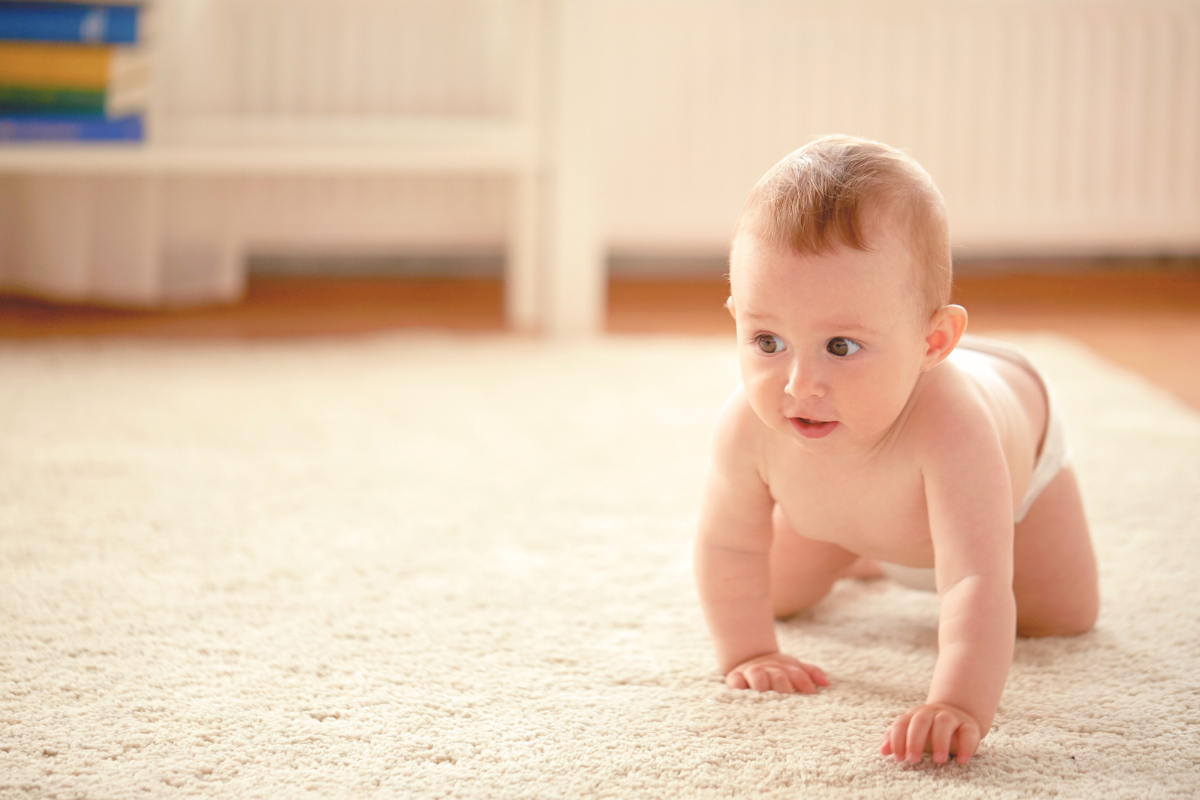
While the age range for crawling is broad, and again, some babies may skip it altogether, there are times when it's best to consult a pediatrician.
The main thing is if your baby isn’t making any progress with movement by 12 months. Many developmental disorders, such as Autism Spectrum Disorder, present with delays in motor development, including crawling.
You should also schedule an appointment with a specialist if they're showing signs of weakness or poor control on one side of the body, hindering their movement.
Any concerns about your baby's motor development should be addressed with a professional so that you can get early intervention if necessary.
Crawling Stage: Developmental Milestones in Crawling
As babies grow, they experiment with various movements that lead up to crawling. Knowing these developmental milestones can help parents support their little ones through this exciting stage.
1. Tummy Time
Tummy time is extremely important in infant development.
Although some babies might initially resist being placed on their stomachs, these supervised sessions are great for developing head control and upper body strength.
During this stage, babies strengthen their neck and shoulder muscles, learning to hold up their heads and support themselves with their elbows. This muscle development helps prepare them for crawling.
To keep your baby safe during tummy time, make sure you get a baby-safe play mat like Poppyseed Play's Padded Baby Play Mat or the Quilted Linen Play Mat.
2. Scooting
Scooting is another important step in the crawling stage. Babies might move forward using their bottoms or bellies, sometimes pushing with their legs or arms. This method helps them develop the necessary coordination and strength for more advanced movements.
Eventually, as babies gain more strength, they may try different moves, such as balancing on their arms and feet, pivoting in circles, rocking back and forth on their hands and knees, and even attempting to move forward.
3. Sitting Up
As babies develop stronger core muscles, they start to sit up independently. The timeline for when they start sitting up varies from baby to baby, of course.
This milestone is a big step because it shows improved balance and muscle control, both of which are needed for crawling. Knowing how to go to a sitting position also allows babies to transition between different positions more easily.
4. Crawling
Finally, babies begin to crawl, typically between seven to ten months old.
Motivation and curiosity play significant roles in this stage -- babies are driven to explore their surroundings in the most effective way they can. That said, we do suggest that you encourage your baby to crawl as much as you can.
Different Baby Crawling Styles
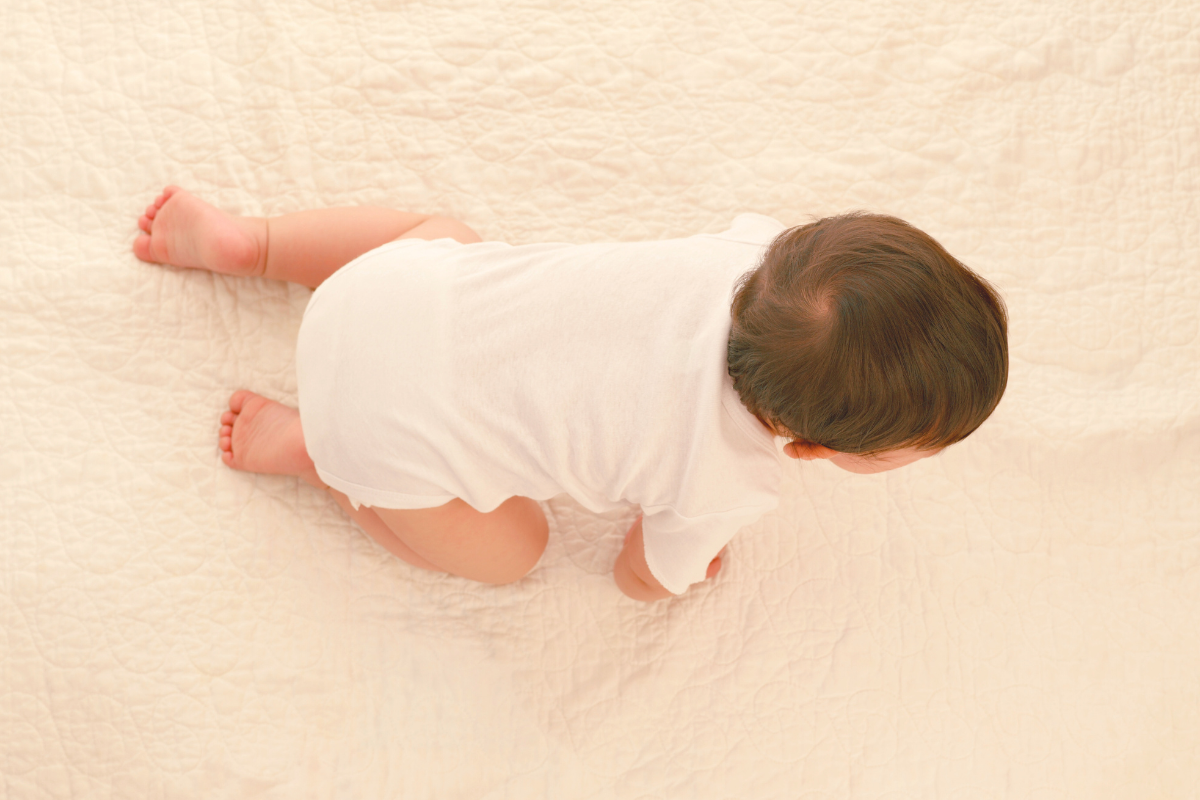
As your baby starts to explore the world, you might notice various crawling techniques. Here's a friendly guide to the different styles of baby crawling you might witness.
1. Classic Crawl or Hands and Knees Crawl
It’s a proud moment to see your baby mastering this common style, also known as "creeping" or "cross crawl."
The classic crawl is what most parents picture when they think of a baby crawling. It's when your little one is on all fours, with their tummy off the floor, moving an arm and the opposite leg in a coordinated dance.
Although it's the classic crawling style, not all babies use it, so don't be worried if you can't get your baby to crawl this way.
2. Crab Crawl
In the crab crawl, your baby might look like they're imitating a sideways-scurrying crab.
This method involves using one knee and one foot, often resulting in backward or sideways motion, much to your baby's occasional frustration.
Imagine your baby, determined to reach a toy but ending up further away or to the side. This quirky, asymmetrical crawl, also known as the hitch crawl or one-legged crawl, is less common but perfectly normal.
3. Bear Crawl
The bear crawl, as the name suggests, makes your baby resemble a little bear cub.
In this style, they keep their arms and legs straight, balancing on their hands and feet rather than their knees. Your baby might look like they’re practicing for gym class with tiny push-ups. This method not only strengthens their muscles but also looks incredibly cute as they maneuver around.
Even if they don’t use this method exclusively, you might see them in this position as they get ready to start standing on their own. It’s a delightful phase filled with giggles and pride as you watch your baby grow stronger.
4. Belly Crawl or Commando Crawl
This crawl often appears before the classic hands-and-knees crawl and sometimes is the only method until they start walking.
The belly crawl, also known as the commando or army crawl, is like a military maneuver on your living room floor. Your baby crawls with their tummy against the floor, using their arms to pull themselves forward.
Some babies start with commando crawling because it requires less strength and balance than getting up on all fours.
5. Rolling Crawl
This crawling position might not develop the best movement patterns for the future, but it’s a delightful and amusing way for babies to move.
The roll crawl is another unique style of movement where babies get to their desired location by rolling. Most babies learn to roll over before crawling, though some learn both at the same time, which is at 3-7 months of age.
Although not the most efficient mode of transportation, it's effective in helping your baby explore their surroundings.
How to Create Safe Spaces When Baby Starts Crawling
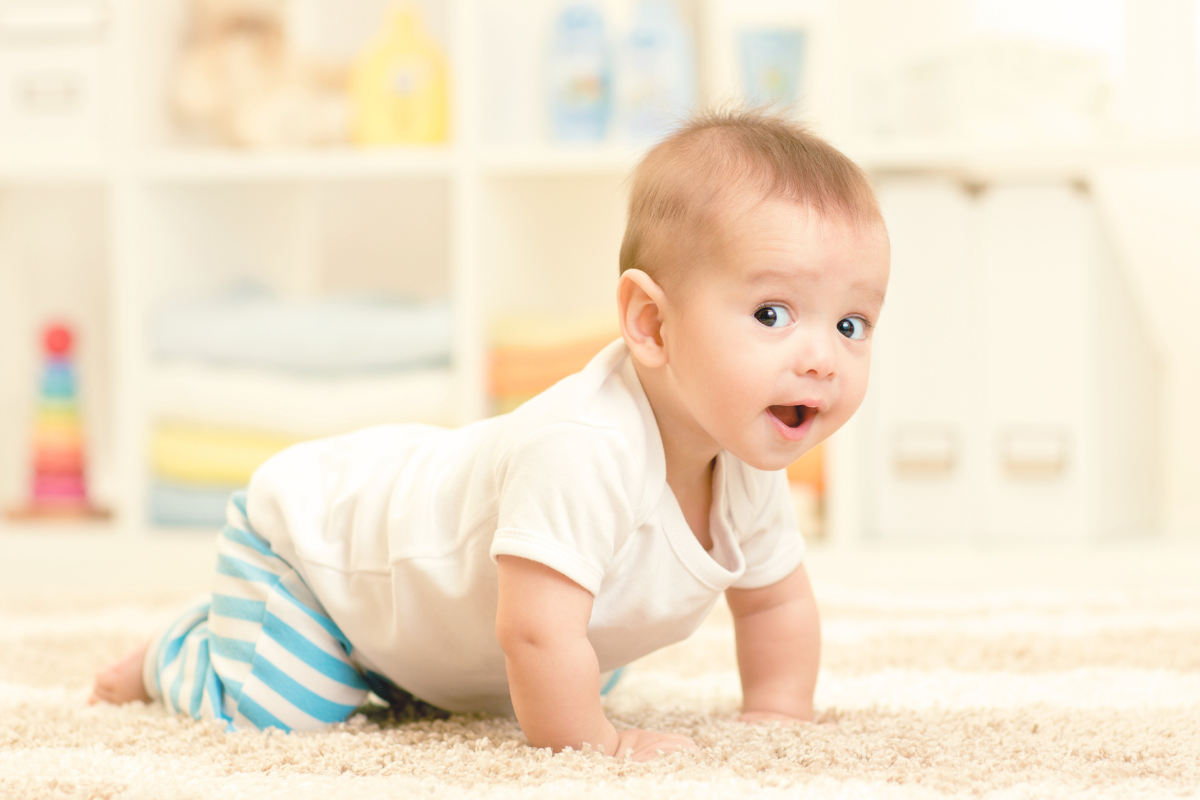
Baby-proofing your home can feel like gearing up for a mission, but it’s worth it for your peace of mind. The goal is to allow your baby to crawl from point A to point B while minimizing the risks as much as possible.
Start by clearing out an area and removing potential hazards so your little explorer can roam freely. Remove small items that could be choking hazards and move electrical and window cords out of reach to prevent accidents.
Here are some things you can do to make your home safer for your baby:
-
Clear out the area and remove potential hazards
-
Remove small items that could be choking hazards
-
Move electrical cords out of reach
-
Add covers to any open electrical outlets
-
Add bumpers to sharp furniture edges
-
Secure heavy furniture to the walls
-
Lock cabinets containing dangerous items like poisons, medicines, and sharp objects
-
Install safety gates in front of areas like the bathroom
-
Block off stairs or doorways
Additionally, make sure you dress your baby in comfy pants or lightweight leggings to cushion their knees. Always keep an eye on them to make sure they don’t get into mischief or get hurt. With these precautions, you can create a safe and stimulating environment for your baby to practice crawling.
Making your home baby-proof might seem like a daunting task, but just think of it as prepping for your little adventurer’s grand exploration.
Final Thoughts
Watching your baby develop their unique crawling style is a delightful and memorable part of parenthood.
From the classic hands-and-knees crawl to the inventive roll crawl, each movement is a testament to your baby's growing strength and curiosity. Knowing when babies start crawling and what crawling styles there are can help you support your baby's motor skill development and create a safe, encouraging environment for them to explore.
At the end of the day, every baby is different and will reach milestones at their own pace. Enjoy this precious time and celebrate each new skill your little one develops. Remember to have fun with it and enjoy every moment of your baby's crawling journey!
FAQs
How long after sitting do babies crawl?
Typically, babies will start crawling about one to two months after they can sit up independently. This can vary, but sitting up helps strengthen the core muscles needed for crawling, marking an exciting phase in your baby's development.
How can I make my house safe for a crawling baby?
To make your home safe for a crawling baby, cover electrical outlets, use safety gates, secure heavy furniture like a coffee table or a wardrobe, and remove small objects that could be choking hazards. This helps create a safe environment for your baby's development as they explore.
Can babies skip crawling altogether?
Yes, some babies may skip crawling and go straight to walking. This is perfectly normal and doesn’t necessarily indicate any issues. Crawling babies often experiment with various movements, and each baby has their own unique way of developing.
What's the hands and knees position in crawling styles?
The hands and knees position, also known as the classic crawl, involves your baby supporting themselves on all fours. In this style, crawling babies move one arm and the opposite knee forward alternately, which helps build their coordination and strength.
When can babies sit?
Babies usually begin sitting up independently between four to seven months. This milestone is an essential part of your baby's development, strengthening their core muscles and eventually helping them progress to crawling and other movements.
